Click on images to enlarge
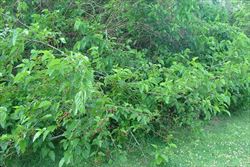
habit (Photo: Sheldon Navie)
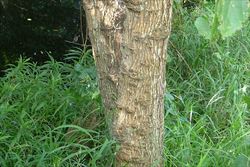
main trunk (Photo: Sheldon Navie)
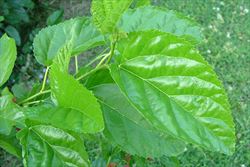
leaves (Photo: Sheldon Navie)

close-up of hairless leaf underside (Photo: Sheldon Navie)

male flower clusters (Photo: Sheldon Navie)
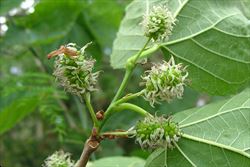
female flower clusters (Photo: Sheldon Navie)
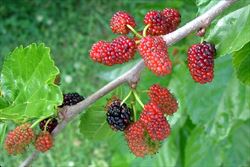
immature fruit (Photo: Sheldon Navie)
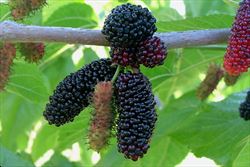
mature fruit (Photo: Sheldon Navie)

close-up of seeds (Photo: Steve Hurst at USDA PLANTS Database)
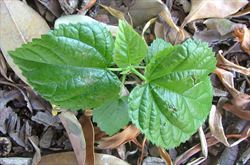
seedling (Photo: Sheldon Navie)
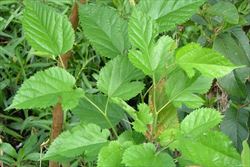
young plant with variously-lobed and entire leaves (Photo: Sheldon Navie)
Scientific Name
Morus alba L.
Family
Moraceae
Common Names
common mulberry, mulberry, silkworm mulberry, white mulberry, white mulberry tree
Origin
Native to central and northern China.
Naturalised Distribution
Widely naturalised in eastern Australia (i.e. in the coastal districts of south-eastern and central Queensland and the coastal districts of central New South Wales). Also recorded from Lord Howe Island and in Perth in south-western Western Australia.
Also naturalised in tropical and southern Africa, the USA, southern South America and Hawaii.
Legislation
Not declared or considered noxious by any state government authorities.
Notes
White mulberry (Morus alba) is regarded as an environmental weed in New South Wales and Queensland. This introduced species has been widely cultivated in gardens for its fruit, and its leaves are also used to feed silkworms. It has become naturalised mainly in the warmer coastal districts of eastern Australia and is a weed of watercourses (i.e. riparian areas), native bushland, forest margins and roadsides.
White mulberry (Morus alba) is ranked among the top 200 most invasive plants in south-eastern Queensland and appears on several local environmental weed lists (e.g. in Ipswich City, Redlands Shire and Caboolture Shire). It is becoming quite common along waterways in Brisbane and other parts of south-eastern Queensland (e.g. it is a priority weed in the Kedron Brook catchment in Brisbane).
It is also naturalised in conservation areas and along waterways in the Sydney region (e.g. Yarramundi Reserve, Tench Reserve Riparian Corridor and Werrington Creek Riparian Corridor in the Hawkesbury River County Council area) and is of concern in north-eastern New South Wales, where it appears on some local and regional environmental weed lists (e.g. in Lismore Shire, Byron Shire and the environmental weed list for the North Coast region).

